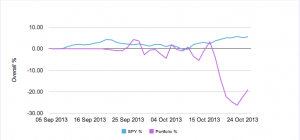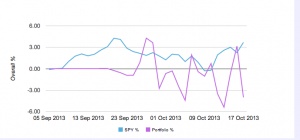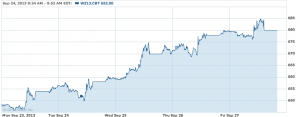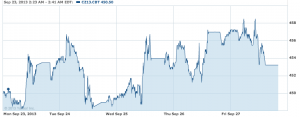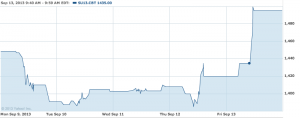Greenhouse Gas Policy in Alberta: conflicting motivations
Brendan McCaffery
March 10, 2014
Alberta is at the crossroads of economic growth and environmental stewardship. The development of the greenhouse gas (GHG) intensive oil sands poses extreme hurdles in combating climate change on provincial, federal and even global levels. As a Canadian I can appreciate the economic role of the oil sands but also realize the shared global importance of reducing GHG emissions to prevent the irreversible damages caused by warming planet.
Around the world governments of all levels are beginning to take steps to reduce GHG emissions in order to help combat global climate change. In this blog post I aim to explore the measures currently being implemented by the Albertan government to help alleviate the direct impact of oil sands production on climate change. First, let us better understand the economic role of the Albertan oil sands. Accounting for 14% of total global oil reserves it is undeniable that the Albertan oil sands will continue to play a role in global energy markets in today’s world of “high oil prices, growing demand, geopolitical tensions, energy security and diminishing conventional reserves”(Charpentier et al. 2009 p.2). As of 2006 the oil sands produced 1.2 billion barrels of crude oil per day and is only forecasted to drastically increase (Charpentier et al. 2009). By 2030 that 1.2 billion barrels per day is expected to increase nearly five times in size to a staggering 5 billion barrels a day and will supply North America with 16% of it’s oil needs (Charpentier et al. 2009). In 2006 the oil sands represented 43% of all Canadian oil and is expected to represent 90% of all Canadian oil by 2025 (Charpentier et al. 2009). Beyond supplying Canada and other trading partners with sources of energy, the oil sands are estimated to have “supported more than 478,000 direct, indirect and induced Canadian jobs in 2012 (3 percent of all jobs in the country) and contributed $91 billion of Canadian gross domestic product (IHS, 2014). These abovementioned statistics clearly portray the importance of the Alberta oil sands to not just the Canadian economy but also global energy markets as a whole, however, as the next section will describe, it does not come without a cost.
The unprecedented levels of investment currently being experienced in Northern Alberta’s oil sands are due the effects of increased demand and the depletion of more conventional sources. As the price of oil increases, so does the feasibility of extracting oil from reserves that have traditionally been labeled as non-viable. It is these same expensive extraction processes that were once deemed too intensive that make the oil sands such heavy GHG polluters. Compared to alternate sources of crude oil, oil sands production requires much higher levels of energy. Some estimates put oil sands extraction at 3.2 to 4.5 times as energy intensive as other extraction processes (Pembina Institute, 2014). Knowing this, it is to no surprise that the oil sands contribute 23 percent to Alberta’s 242 Mt of GHG emissions and 3 to 4 percent of Canada’s entire GHG emissions (Government of Alberta, 2011). It is important to note that these extremely high levels of pollution have not gone unnoticed; citizens, from both Canada and abroad, environmental groups, governments and media attention have made oil sands development an extremely contentious issue.
Even though efficiency improvements have resulted in a 51% reduction in the GHG intensity of oil sands production from 1990 to 2006, these reductions will be offset by the compounding effects of the higher levels of expected expansion as described above (Charpentier et al. 2009). It is clear that government imposed regulation is needed to steer the oil sands in a sustainable direction. Various forms of regulation are available to governments to help reduce emissions, each with their own pros and cons. Currently the Albertan and Federal government has implemented a GHG intensity target for facilities that emit more than 100,000 tonnes of GHG’s which is currently set at 12% (Government of Alberta, 2014). At a first glance this regulation may seem like a straightforward method to reduce provincial GHG levels, however as we delve deeper into the functioning’s of Alberta’s GHG Reduction Program some complications are revealed. First and foremost, as the reduction program only targets emissions intensity, the actual levels of GHG emissions can still increase. Further, under this program firms are able to reduce GHG intensity levels not just by making improvements to their operations, but through the purchase of Alberta-based offset credits, contributions to the Climate Change and Emissions Management Fund and through the purchase of Emission Performance Credits.
The Alberta-based offset credit system allows firms to purchase GHG reductions accomplished by non-regulated parties. In a sense this policy allows for firms across sectors to match marginal costs of abatement. For example a firm with high costs of abatement will be willing to pay a firm with lower costs of abatement for their contributions towards GHG reductions. Offsets can be purchased from a wide variety of sources across numerous sectors, such as changes to tilling practices in agriculture, biofuels, biomass and so forth (Government of Alberta, 2013).
The option to contribute to the Climate Change and Emissions Fund is an attempt by the Government to put a price on GHG emissions. Currently a fee $15 per tonne of emissions can be paid out by firms to help reach their target (Government of Alberta, 2013). The contributions are to be reinvested into the research and development of GHG reducing technologies (Government of Alberta, 2013). Research in carbon capture seems to be the largest receiver of this fund as it has received substantial support from both the Albertan and Federal governments. Compared to the $30 per tonne carbon tax rate being implemented in the neighboring province of BC, it could be easily argued the $15 per tonne contribution does not accurately reflect the damages of GHG emissions felt globally.
Emission Performance Credits work in a very similar to the Alberta-based offset system, except that the emission performance credits are created by regulated firms who have already have achieved their 12% reduction (Government of Alberta, 2013). Firms are able to bank these credits or sell them to firms who have not yet met their obligations. Once again, this is encouraging the equalization of marginal abatement costs across firms.
The economic theory supporting Alberta’s GHG Reduction Program is sound, however I believe there are some serious flaws. Firstly, I believe by targeting the GHG intensity of firms instead of regulating straight GHG emissions Alberta is sidestepping having to reach a well-defined goal. Further, I believe the complicated nature of the program will create severe GHG emission accounting problems. Compared to the universal flat tax rate implemented in BC, the Alberta GHG Reduction Program may be too convoluted to create any observable and meaningful changes. As public opinion continues to turn against Albertan oil sands, I believe it to be imperative Alberta continues to explore for more meaningful ways to do their part in combating climate change.
Reference:
Canadian Association of Petroleum Producers.” CAPP. CAPP, 05 Jun 2012. Web. 11 Mar 2014. <http://www.capp.ca/aboutUs/mediaCentre/NewsReleases/Pages/2012-Oil-Forecast.asp&xgt;.
Charpentier, Alex D., Joule A. Bergerson, and Heather L. MacLean. “Understanding the Canadian oil sands industry’s greenhouse gas emissions.”Environmental Research Letters 4.1 (2009): 014005.
“Canadian Oil Sands INvestments Supports More Than 478 000 Jobs Today; Will Support more than 753 000 by 2025, IHS Study.” IHS. IHS, 11 Feb 2014. Web. 11 Mar 2014. <press.ihs.com>.
“Regulating Greenhouse Gas Emissions.” Environment and Sustainable Resource Development. Government of Alberta. Web. 11 Mar 2014. <environment.alberta.ca/0915.html>.
“Oil Sands 101.” Pembina Institute. Pembina Institute. Web. 11 Mar 2014. <http://www.pembina.org/oil-sands/os101/climate>.
